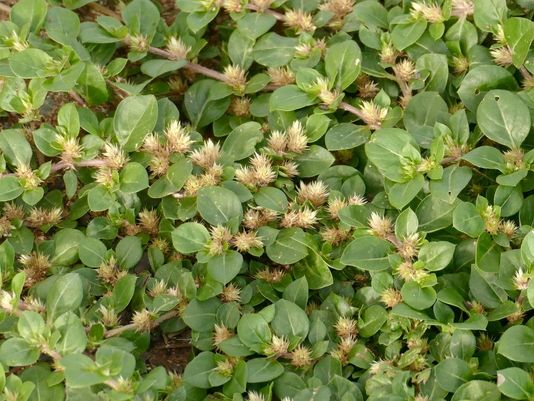Agriculture Victoria (2020). Invasiveness Assessment - Khaki weed (Alternanthera pungens) in Victoria . Victorian Resources Online, Victoria State Government. Available at: Invasiveness Assessment - Khaki weed (Alternanthera pungens) in Victoria (Nox) | VRO | Agriculture Victoria
APC (2020). The Australian Plant Census, Council of Heads of Australasian Herbaria, Available at: Vascular Plants APNI (biodiversity.org.au)
AVH (2020). The Australasian Virtual Herbarium, Council of Heads of Australasian Herbaria, Available at: Home - AVH (chah.org.au)
Brisbane City Council (2020). Weed Identification Tool; Khaki weed - Alternanthera pungens, Available at: Khaki weed (brisbane.qld.gov.au)
CABI, (2020). Alternanthera pungens (Khaki weed): In: Invasive Species Compendium. Wallingford, UK: CAB International. Available at: Alternanthera pungens (Khaki weed) | CABI Compendium (cabidigitallibrary.org)
DEEDI (2020). Alternanthera pungens: Environmental Weeds of Australia, Biosecurity Queensland. Department of Employment, Economic Development and Innovation (DEEDI). Queensland Government. Available at: Alternanthera pungens (lucidcentral.org)
DPI, NSW (2019). Khaki weed (Alternanthera pungens) : NSW Weedwise. Department of Primary Industry (DPI), NSW Government. Available at: NSW WeedWise
eFloraSA (2020). Alternanthera pungens . In: Electronic Flora of South Australia. (State Herbarium of South Australia: Adelaide). Available at: Fact sheet for Alternanthera pungens (flora.sa.gov.au)
Government of South Australia, (2021). Declared Plant Policy, Khaki weed (Alternanthera pungens). Goverment of South Australia. Available at: Proclaimed Plant Policy (pir.sa.gov.au)
Miller, I.L. & Schultz, G.C. (1997) Khaki Weed (Alternanthera pungens) Agnote F36. Northern Territory Government. Natural Resources, Environment and the Arts.
Navie S. (2004). Declared Plants of Australia. An identification and information system. Centre for Biological Information Technology: Brisbane. [CD-ROM]
Northern Territory Government (2020). Khaki weed. Northern Territory Government of Australia. Available at: Khaki weed | NT.GOV.AU
Parsons, W.T. & Cuthbertson, E.G. (2001) Noxious weeds of Australia, 2nd edn. Inkata Press Melbourne & Sydney.
PlantNET (2020). Alternanthera pungens : The NSW Plant Information Network System. Royal Botanic Gardens and Domain Trust, Sydney. Available at: PlantNET - FloraOnline (nsw.gov.au)
USDA, Agricultural Research ServiceUSDA, Agricultural Research Service, National Plant Germplasm System. (2020). Germplasm Resources Information Network (GRIN-Taxonomy). National Germplasm Resources Laboratory, Beltsville, Maryland. Available at: Alternanthera pungens Kunth GRIN-Global (pir.sa.gov.au)
VicFlora (2016). Flora of Victoria, Royal Botanic Gardens Victoria, Available at: VicFlora: Alternanthera pungens (rbg.vic.gov.au)
Western Australian Herbarium (1998–). Alternanthera pungens, In: FloraBase—the Western Australian Flora. Department of Biodiversity, Conservation and Attractions. Available at: Taxon Profile of Alternanthera pungens Kunth | Florabase (dbca.wa.gov.au)































